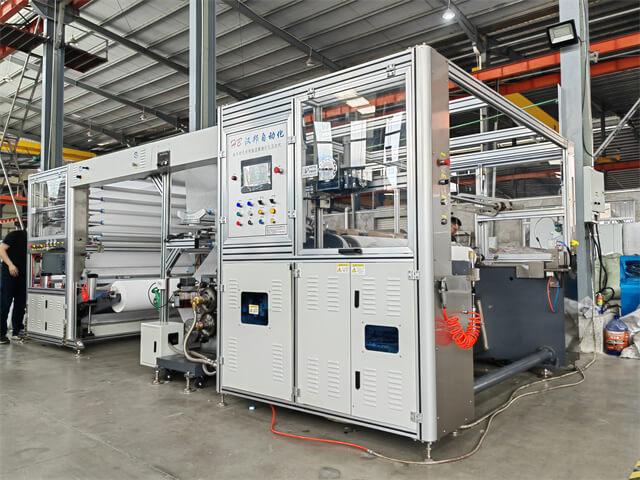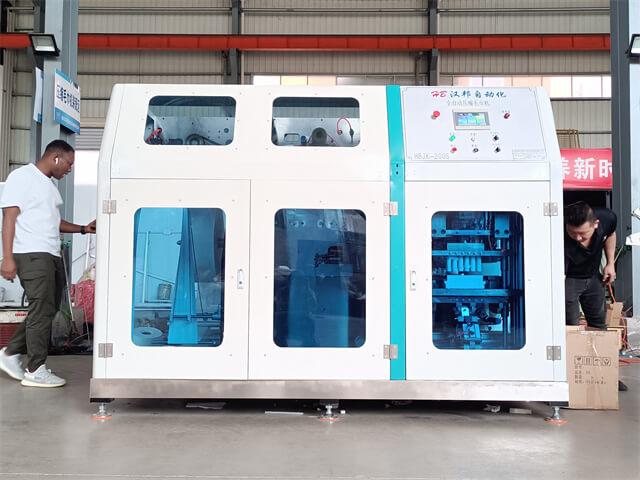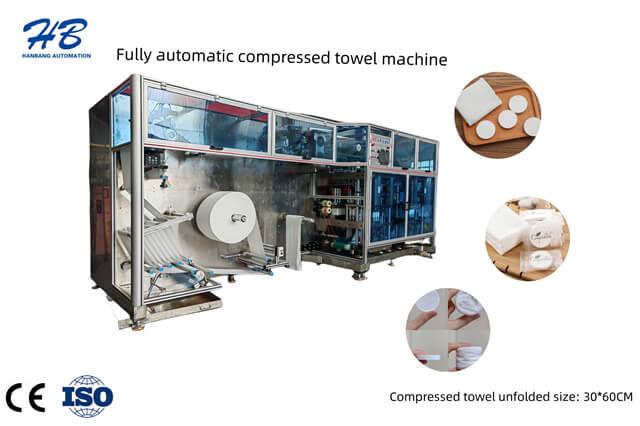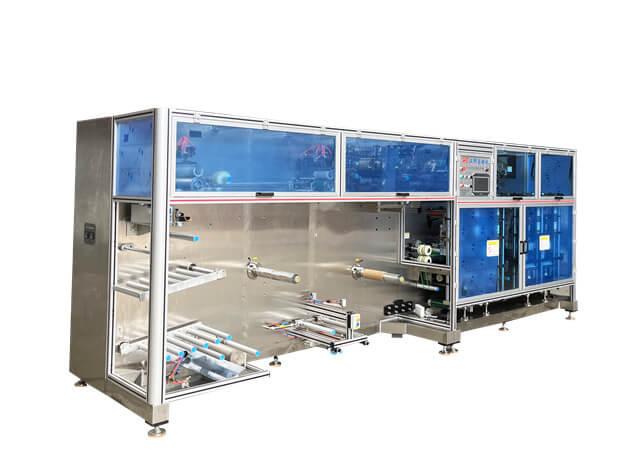Author:HB Nonwoven MachineryFROM:Compressed Towel Machine Manufacturer TIME:2023-12-05
Market Analysis of Non Woven Fabric Roll Cutting Machine

The non woven fabric roll cutting machine plays a crucial role in the production of disposable hygiene products such as diapers and sanitary napkins. As the demand for these products continues to rise, the market for non woven fabric roll cutting machines is also witnessing significant growth. This article aims to provide an analysis of the market for non woven fabric roll cutting machines in the diaper and sanitary napkin industry.

The increasing awareness about personal hygiene and the growing population have led to a surge in the demand for disposable hygiene products. Diapers and sanitary napkins are widely used by people of all age groups, from infants to adults, creating a substantial market for these products. As a result, the demand for non woven fabric roll cutting machines, which are essential for their production, has also witnessed a steady increase.

The non woven fabric industry has seen significant advancements in recent years, with the introduction of new materials and manufacturing techniques. These advancements have led to the development of high-quality non woven fabrics that offer superior absorption, comfort, and durability. To meet the growing demand for these advanced fabrics, manufacturers are investing in cutting-edge roll cutting machines that can precisely cut the non woven fabric rolls into desired sizes and shapes.
Automation has become a key driver in the diaper and sanitary napkin industry, and non woven fabric roll cutting machines are no exception. The integration of automation technology in these machines has significantly improved production efficiency and reduced labor costs. Automated roll cutting machines can accurately measure and cut the fabric rolls at a much faster rate than manual methods, resulting in higher productivity and lower wastage. As a result, manufacturers are increasingly adopting automated cutting machines to streamline their production processes.
In today's competitive market, product quality and customization have become crucial factors for success. Non woven fabric roll cutting machines play a vital role in ensuring consistent quality and customization of disposable hygiene products. These machines allow manufacturers to achieve precise cutting measurements, ensuring uniformity in the final products. Furthermore, they enable customization by offering flexibility in cutting different sizes and shapes of fabric rolls, catering to the diverse needs of consumers.
The increasing disposable income and changing lifestyles of consumers have resulted in a shift towards premium disposable hygiene products. Consumers are willing to invest in high-quality diapers and sanitary napkins that offer enhanced comfort and performance. This trend has prompted manufacturers to upgrade their production equipment, including non woven fabric roll cutting machines. By using advanced cutting machines, manufacturers can deliver premium products that meet the evolving demands of consumers.
The demand for disposable hygiene products is not limited to developed economies but also growing rapidly in emerging markets. Countries like China, India, and Brazil are experiencing significant population growth and urbanization, driving the demand for diapers and sanitary napkins. To cater to these markets, manufacturers are expanding their production capabilities and investing in advanced roll cutting machines. The global expansion of the diaper and sanitary napkin industry presents lucrative opportunities for the non woven fabric roll cutting machine market.
The market for non woven fabric roll cutting machines is highly competitive, with several key players dominating the industry. These players focus on continuous research and development to improve their machine's cutting precision, speed, and efficiency. Additionally, they collaborate with manufacturers of non woven fabrics to develop integrated systems that optimize production processes. The competitive landscape of the non woven fabric roll cutting machine market is expected to intensify further as new entrants enter the market and existing players invest in technological advancements.
The market for non woven fabric roll cutting machines is witnessing significant growth due to the increasing demand for disposable hygiene products and advancements in fabric technology. Automation, product quality, customization, changing lifestyles, and emerging markets are driving the expansion of this market. Manufacturers are focusing on improving cutting precision, speed, and efficiency to meet the evolving demands of the diaper and sanitary napkin industry. As the competition intensifies, it is crucial for players in the non woven fabric roll cutting machine market to stay ahead by investing in research and development and forming strategic partnerships.





